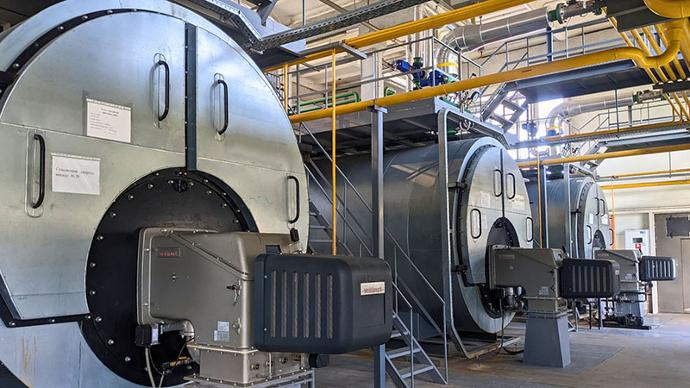Key Differences Between Water-Tube and Fire-Tube Boilers
Water-tube boilers have a smaller water volume compared to fire-tube boilers, providing an advantage in rapid power shifts, heating, and generating maneuverable steam. Conversely, fire-tube boilers, with their larger water volume, effectively accumulate heat, reducing startup frequency due to more inertial cooling.
Advantages of Water-Tube Boilers:
|
Advantages of Fire-Tube Boilers:
|
We analyzed two types of boilers - the D-type water-tube and the three-pass fire-tube boiler - focusing on their performance from 1 to 25 tons/hour at a working pressure of 13 bar. Additionally, we examined these models at a capacity of 10 tons/hour at various working pressures. The results of this analysis are presented in the graphs below.
This graph visualizes the metal usage correlation between D-type and three-pass steam boilers.
Capacity to Metal Usage
According to the graph, the characteristics of both boiler types intersect around a 5 tons/hour load. This indicates that up to this point, the fire-tube boiler has lower metal usage, while above this load, the water-tube boiler becomes more material-efficient. For instance, the DE-6.5-14GM boiler weighs 14 tons, whereas a fire-tube boiler with similar parameters at this capacity weighs 16 tons.
This chart compares various boiler designs at a consistent capacity of 10 tons/hour, illustrating changes in metal usage across different working pressures.
Metal Usage to Working Pressure
Comparing the D-typ boiler at 13 bar and 23 bar, we see a 15% increase in metal usage. In contrast, for the fire-tube boiler with similar characteristics, the increase in metal usage is 45%. This points to significant differences in design and material usage between both types of boilers as working pressure increases.

Balancing Efficiency and Material Use in Boiler Selection
Based on our analysis, we conclude that for lower capacities or lower steam pressure parameters, fire-tube boilers often prove to be more competitive, mainly due to their simplicity in manufacturing and efficient material use. However, as the power and steam parameters increase, water-tube boilers become a more attractive option, offering higher efficiency and reduced metal usage, especially at higher pressures.